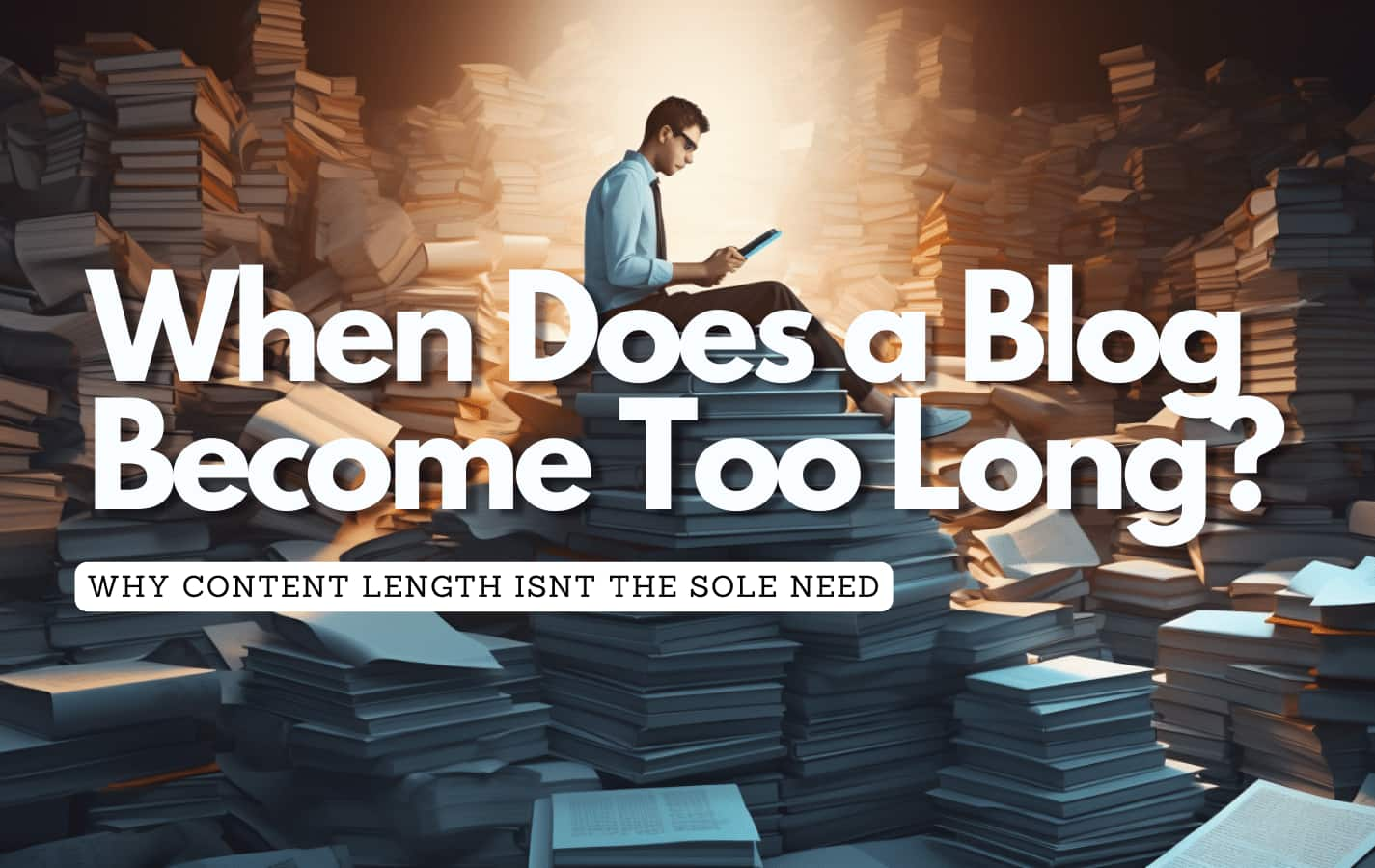Are long blog posts effective or do they risk losing the attention of readers? In today’s fast-paced digital world, finding the perfect balance between depth and brevity is crucial for engaging audiences.
But how long is too long for a blog post? To answer this question, we must consider factors such as audience attention span, readability, SEO, and user experience.
While there is no one-size-fits-all answer, understanding these variables can help us determine the ideal length for a blog post. So, whether you’re a blogger, content creator, or marketer, join us as we explore the impact of blog post length and discover how to create captivating content that keeps readers hooked from start to finish.
Finding Your Audience’s Attention Span
Imagine you’re scrolling through your favorite blog, looking for a quick read, and suddenly you come across a post that seems to go on and on, making you wonder just how long is too long for a blog post.
As a writer, it’s crucial to consider your audience’s attention span. Research shows that the average attention span of internet users is around 8 seconds.
This means that you have a limited window of opportunity to capture and keep their attention. When it comes to blog posts, it’s generally recommended to aim for a length of 1,000 to 1,500 words. This allows you to provide enough valuable information without overwhelming your readers.
Remember, quality is more important than quantity. Focus on delivering concise, engaging content that adds value to your audience’s lives.
Balancing Depth and Brevity in Content
Discover the perfect balance between in-depth analysis and concise writing to captivate your readers.
When creating blog content, it is important to strike a balance between providing enough depth to engage your audience and keeping your writing concise enough to hold their attention.
While some readers may prefer longer, more detailed posts, others may prefer shorter, to-the-point articles. To find the sweet spot, consider your target audience and their preferences.
If you are writing for experts or enthusiasts in a particular field, they may appreciate a more in-depth analysis.
However, if your audience consists of busy individuals who are looking for quick and easily digestible information, it is best to keep your content concise.
By balancing depth and brevity, you can ensure that your blog posts effectively communicate your message while keeping your readers engaged.
The Impact of Blog Post Length on Readability

To truly engage your readers, consider the impact of the length of your blog posts on their readability and focus on finding the perfect balance. The length of a blog post can greatly affect how easily readers can consume and understand the content.
While some bloggers believe longer posts are more comprehensive and provide more value, others argue that shorter posts are more effective in capturing and maintaining readers’ attention. Research suggests that readers tend to prefer shorter blog posts as they are easier to skim and digest.
However, this doesn’t mean that longer posts should be completely avoided. The key is to provide valuable and engaging information in a concise and organized manner. By finding the right balance between depth and brevity, you can create blog posts that are both readable and impactful.
SEO Considerations for Blog Post Length
Considering SEO, finding the optimal length for your blog content is crucial for maximizing visibility and attracting organic traffic. When it comes to SEO considerations for blog post length, there is no one-size-fits-all answer. It depends on various factors such as the topic, industry, and target audience.
However, research suggests that longer blog posts tend to perform better in terms of search engine rankings. This is because longer posts often provide more in-depth information and cover a wider range of keywords, increasing the chances of ranking for relevant search queries.
Additionally, longer posts tend to attract more backlinks, which further boosts SEO. However, it’s important to strike a balance and not sacrifice quality for the sake of length.
Ultimately, the goal should be to provide valuable and engaging content that meets the needs of your readers while also satisfying SEO requirements.
Enhancing User Experience with the Right Length
Aim for the perfect length to captivate your audience and keep them engaged throughout your content. When it comes to enhancing user experience with the right length of a blog post, there are a few factors to consider.
First and foremost, you want to ensure that your blog post provides value to your readers. It should be informative, well-written, and easy to digest. Lengthy blog posts can be overwhelming and may deter readers from fully engaging with your content.
On the other hand, if your blog post is too short, it may not provide enough information to satisfy your audience’s needs. Finding the right balance is key. Generally, blog posts between 1,000 to 2,000 words tend to perform well.
However, it ultimately depends on the topic and the audience’s preferences. Experimenting with different lengths and analyzing your audience’s behavior can help you determine the ideal length for your blog posts.
Frequently Asked Questions
How can I determine the ideal length for my blog posts to capture my audience’s attention span?
To determine the ideal length for your blog posts and capture your audience’s attention span, consider the average reading time, engagement metrics, and the complexity of your content. Experiment with different lengths and analyze the results to find what works best for your specific audience.
Are there any strategies to maintain a balance between providing in-depth information and keeping my blog posts concise?
There are strategies to balance in-depth information and concise blog posts. Focus on providing relevant and valuable content, use bullet points or subheadings to break up the text, and consider creating a series of posts if the topic requires more depth.
What factors should I consider when evaluating the impact of blog post length on readability?
When evaluating the impact of blog post length on readability, consider factors such as the target audience’s attention span, the complexity of the topic, and the overall structure and organization of the content.
How does blog post length affect search engine optimization (SEO) efforts?
Blog post length is an important factor in SEO efforts. Longer posts tend to rank higher on search engines, as they provide more in-depth information and opportunities for keyword optimization.
Besides the length of the blog post, what other factors can enhance the user experience on my website?
Other factors that can enhance the user experience on your website include a visually appealing design, easy navigation, engaging content, fast loading speed, mobile responsiveness, interactive features, and clear call-to-action buttons.
What Are the Benefits of Using Content at Scale Instead of Jasper?
Content scaling comparison: scale vs jasper. Scaling content brings numerous benefits compared to using Jasper. With content at scale, businesses can reach a larger audience, enhance brand exposure, and grow their online presence. Additionally, scaled content allows for better engagement, improved SEO rankings, and increased conversions. Scale is the way to go for businesses looking to maximize their impact and achieve long-term success.
Conclusion
In conclusion, finding the right length for a blog post is crucial for engaging and retaining your audience. While there is no one-size-fits-all answer, it is important to consider your audience’s attention span, balance depth and brevity, and optimize for SEO.
By understanding these factors and focusing on enhancing user experience, you can create blog posts that are both informative and enjoyable to read. So, remember to keep your blog posts concise, but don’t be afraid to provide valuable and in-depth content when necessary.





